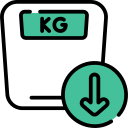Q. How is a stroke diagnosed, and what tests are typically conducted?
Doctor Answer is medically reviewed by SecondMedic medical review team.
Diagnosing a stroke is a critical and time-sensitive process that relies on various tests and assessments. The goal is to determine the type of stroke and its severity so that appropriate treatment can begin promptly.
Clinical Evaluation:
When someone arrives at the hospital with suspected stroke symptoms, a thorough clinical evaluation is the first step. Medical professionals will ask questions about the symptoms, medical history, and any risk factors. They'll also perform a physical examination to assess neurological signs like weakness, numbness, or difficulty speaking.
Imaging Tests:
1. CT Scan: A CT (Computed Tomography) scan is often the initial imaging test. It helps distinguish between ischemic strokes (caused by a blocked blood vessel) and hemorrhagic strokes (resulting from bleeding in the brain). Time is of the essence here, as certain stroke treatments are only suitable for specific types.
2. MRI: Magnetic Resonance Imaging provides more detailed images of the brain. It's particularly valuable in detecting small or posterior circulation strokes.
Blood Tests:
Blood tests are conducted to assess various factors, including:
- Clotting Function: Testing for abnormal clotting factors can help identify conditions that might increase stroke risk.
- Lipid Profile: Checking cholesterol levels can reveal potential contributors to atherosclerosis, a risk factor for stroke.
Electrocardiogram (ECG or EKG):
An ECG records the electrical activity of the heart. It's essential because irregular heart rhythms (such as atrial fibrillation) can lead to blood clots that may cause a stroke.
Carotid Ultrasound:
This test examines the carotid arteries in the neck, looking for signs of atherosclerosis or plaque buildup that could increase the risk of stroke.
Cerebral Angiography:
In some cases, a cerebral angiogram may be performed to visualize blood vessels in the brain. It's an invasive procedure and typically reserved for complex cases.
Lumbar Puncture:
A lumbar puncture, or spinal tap, may be done if there's uncertainty about the cause of neurological symptoms. It involves taking a sample of cerebrospinal fluid to check for bleeding or infection.
Conclusion:
Diagnosing a stroke is a precise and multifaceted process. The choice of tests depends on the individual's symptoms, medical history, and the clinical assessment. Quick and accurate diagnosis is crucial for determining the most suitable treatment, whether it's medication to dissolve a clot or surgery to repair a damaged blood vessel. If you suspect someone is having a stroke or experience stroke symptoms yourself, don't delay—seek immediate medical attention. Stroke treatments are most effective when administered as swiftly as possible to minimize brain damage and improve outcomes.











